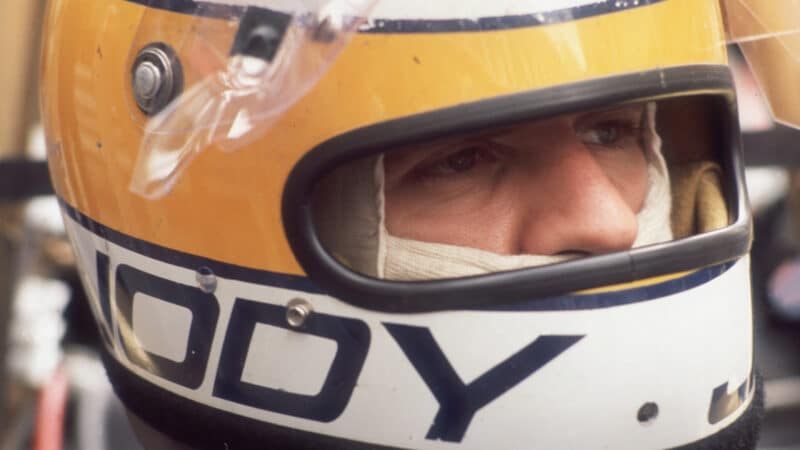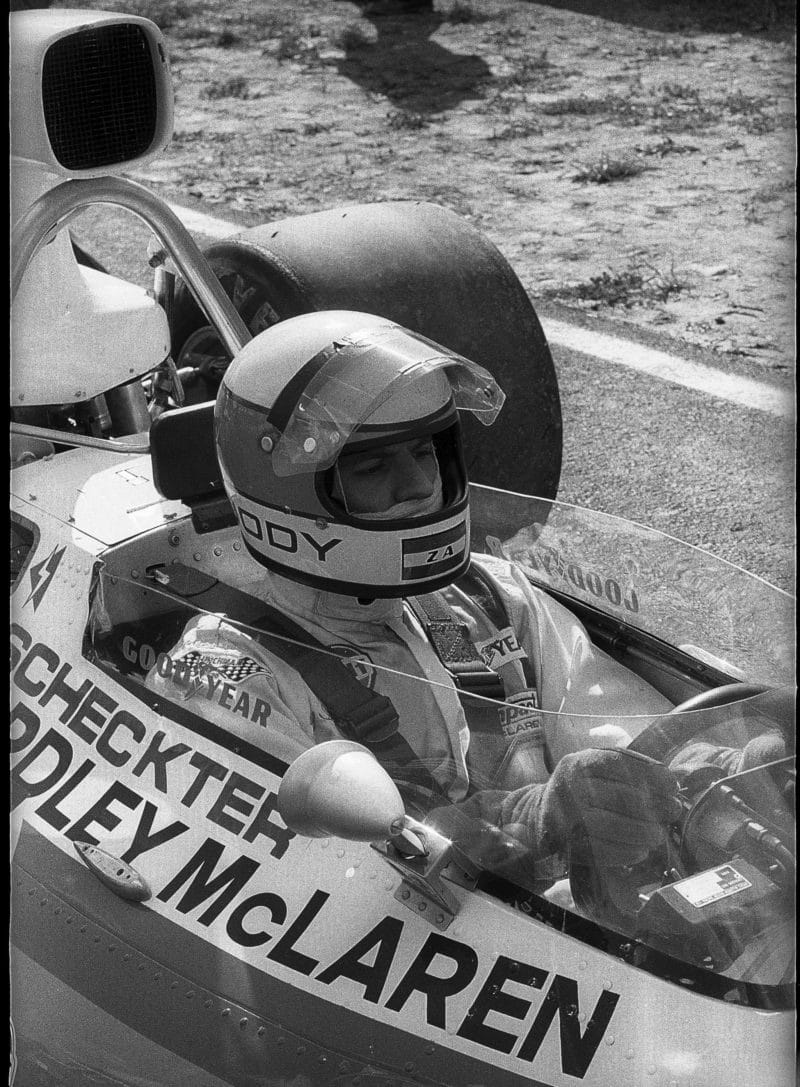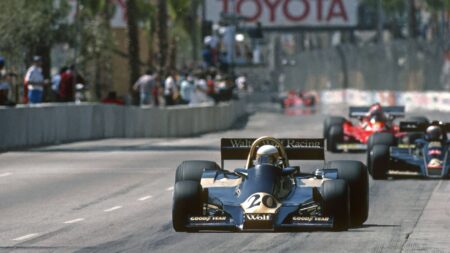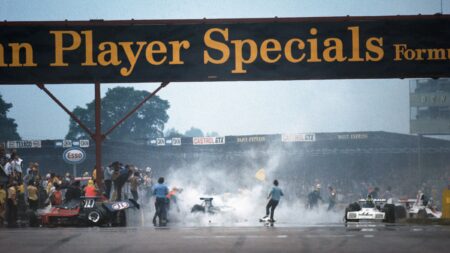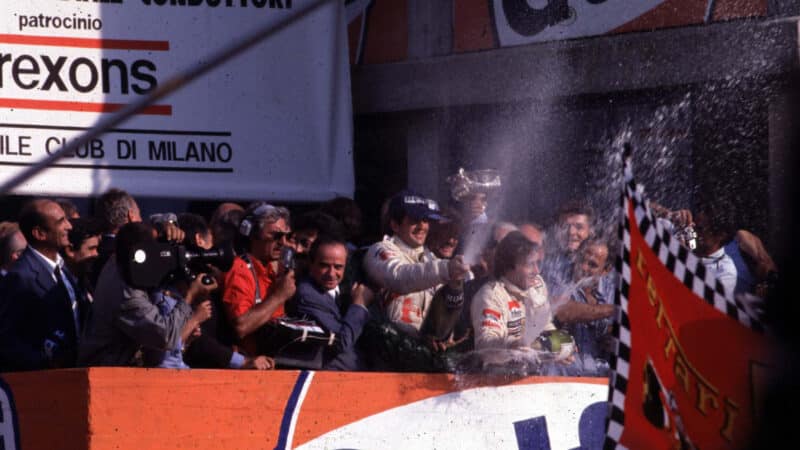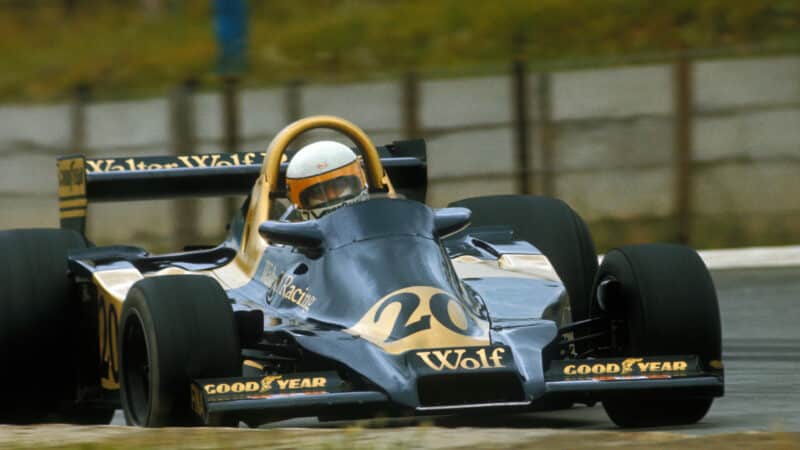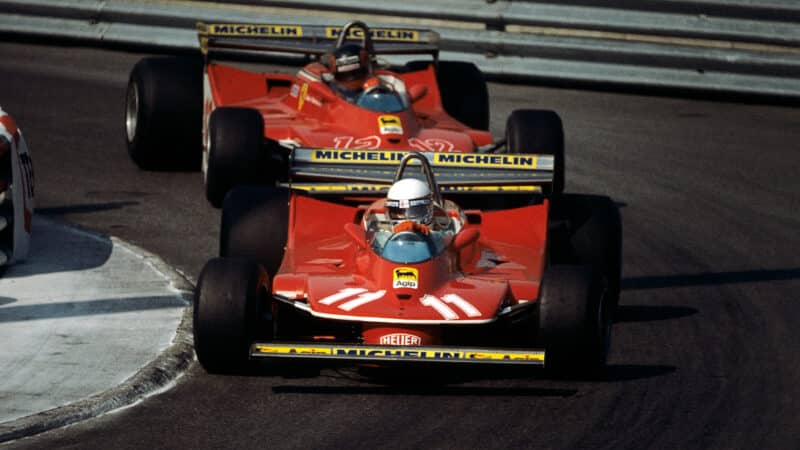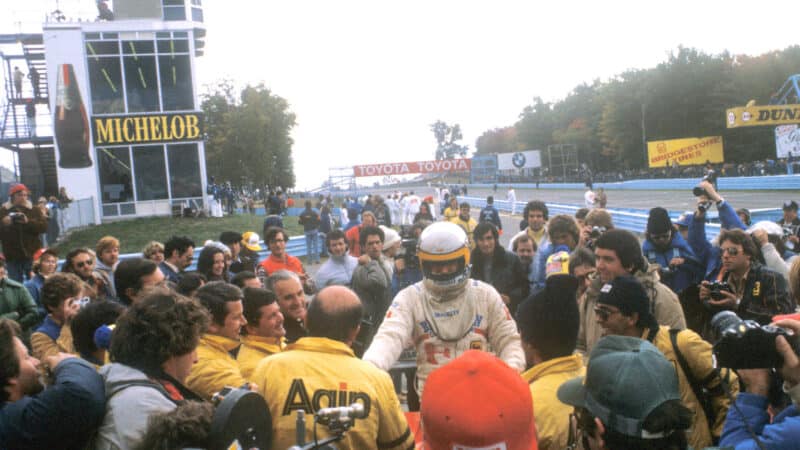The next year, 1973, he won the Sports Car Club of America’s Formula 5000 series, bagging three victories in a Trojan-Chevy and one in a Lola-Chevy, taking the championship ahead of pre-season favourite Brian Redman, a far more experienced man. He raced five grands prix for McLaren in 1973, too. At Paul Ricard he qualified second, led 42 laps, and could well have won had he not tangled with reigning world champion Emerson Fittipaldi’s Lotus while they were lapping a backmarker, ending both their races and causing Emmo to call Jody “a madman and a menace”. Worse was to come at Silverstone a fortnight later. Scheckter spun on the opening lap and triggered a truly enormous shunt, which, coming so soon after his having incurred Fittipaldi’s wrath, caused the Grand Prix Drivers’ Association members to demand that he be banned. That did not happen, but McLaren judiciously ‘rested’ him for four races instead.
To put it bluntly, at this stage in his career, 23-year-old Scheckter had become widely regarded as a gifted ruffian. It was a pretty fair judgment, too. But very soon it would no longer be so. Why not? Because, shortly after he had returned from his four-race ‘rest’, in qualifying for his sixth grand prix, the 1973 United States Grand Prix at Watkins Glen, he was running just behind Cevert when the Frenchman lost control of his Tyrrell in the fast uphill Esses, causing it to crash with such force that a restraining barrier was uprooted. Scheckter stopped to try to help. What he found – and saw – changed him for ever. Poor Francois had been cut in half, and Jody never drove with such undisciplined abandon ever again.
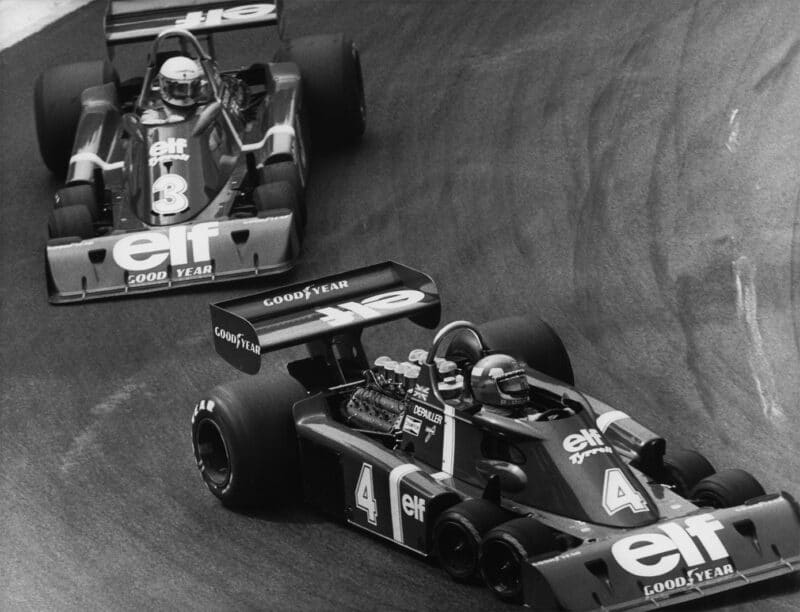
Depailler leads Scheckter at Monaco in 1976. The order was reversed at the flag, where the six-wheeled Tyrrell P34s would finish second and third
Bernard Cahier/Getty Images
From the following year onwards, 1974, in which season Scheckter was now racing for Tyrrell, alongside not Cevert, whom he had expected to be partnering, but another Frenchman, Patrick Depailler, he added a degree of shrewd decorum to his raw speed, and the result was that he quietly but quickly became one of the finest drivers in F1. That year – his first full season in F1, remember – he won two grands prix, at Anderstorp and Brands Hatch, and he was in contention for the world championship right down to the wire, the season’s finale at Watkins Glen. In the end he finished third in the title chase behind Fittipaldi (McLaren) and Clay Regazzoni (Ferrari).
In 1975 he won his home grand prix, at Kyalami, and he scored two more podiums, at Zolder and Silverstone. In 1976, given a six-wheeled Tyrrell that he loathed, he won again at Anderstorp and scored fine second places at Monaco, Brands Hatch, Nürburgring and Watkins Glen, where he led 41 of the race’s 59 laps in a scintillating dice with McLaren’s James Hunt, who eventually pipped him for the win.
